Overview
|
On August 21, 2017 all of the United States experienced at least a partial solar eclipse of the sun. Some locations were fortunate enough to observe a total solar eclipse, where the moon completed blocked the sun for a short period. The path of totality stretched from Oregon, east southeastward across the nation, to South Carolina, and was roughly 70 miles wide. In the Heartland, the center path of totality stretched from near Carbondale and Dixon Springs, IL down towards the Eddyville and Hopkinsville, KY areas. Near these locations, totality was observed at about 2 minutes and 40 seconds. Some interesting weather phenomenon were observed during this eclipse. Temperatures began to drop roughly 30 to 60 minutes before totality, and bottomed out about 5 to 10 minutes after totality ended. Readings dropped anywhere from 4 to 8 degrees across the region. You may have also noticed a decrease in the cumulus cloud field leading up to totality. With the decreased solar radiation and temperatures lowering, the cumulus field that had become rather expansive in many areas about 1 to 2 hours before the eclipse, suddenly began to thin out right before and during totality. Within about 60 to 90 minutes after totality of the eclipse, the cumulus clouds had begun to redevelop as temperatures rebounded back to what they were prior. |
.jpg) Image during totality taken at NWS Paducah, KY |
 |
| GOES-16 Visible Satellite, true-color RGB images. This is preliminary, non-operational data. Source: CIMSS/SSEC/University of Wisconsin-Madison |
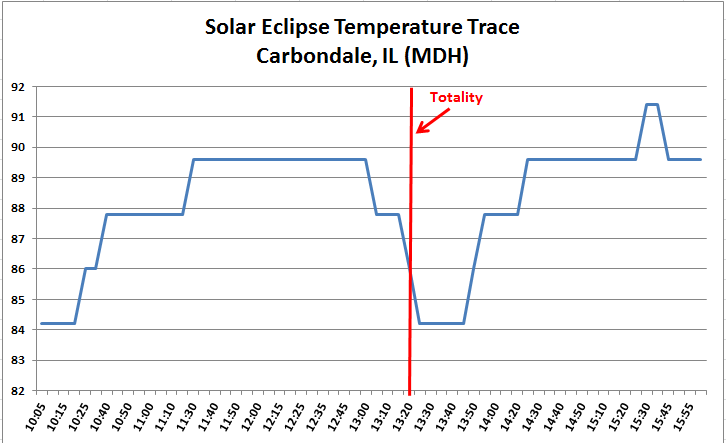 |
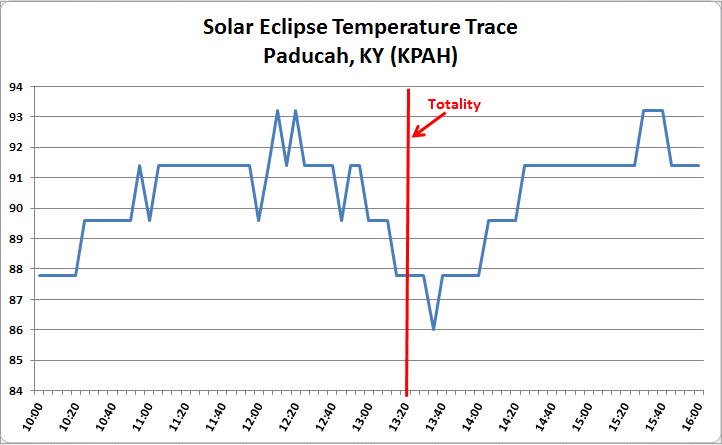 |
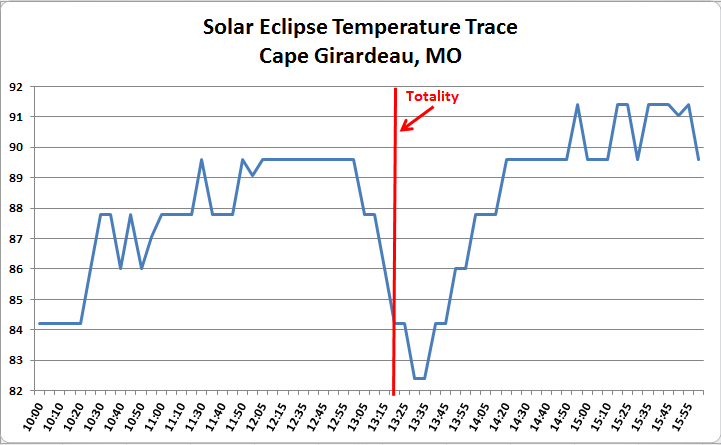 |
| Carbondale, IL Temperature Trace: 10 AM - 4 PM | Paducah, KY Temperature Trace: 10 AM - 4 PM | Cape Girardeau, MO Temperature Trace: 10 AM - 4 PM |
.png) |
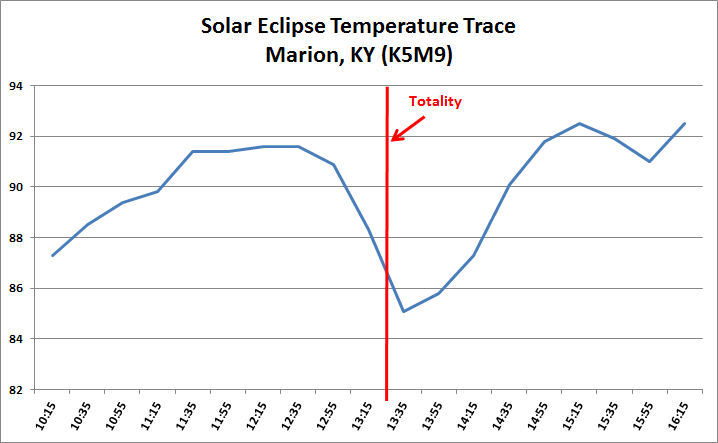 |
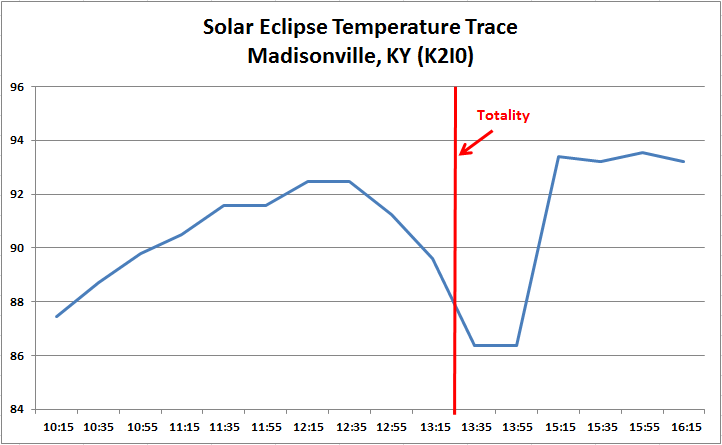 |
| Hopkinsville, KY Temperature Trace: 10 AM - 4 PM (Observation Equipment from NWS Personnel) |
Marion, KY Temperature Trace: 10 AM - 4 PM | Madisonville, KY Temperature Trace: 10 AM - 4 PM |
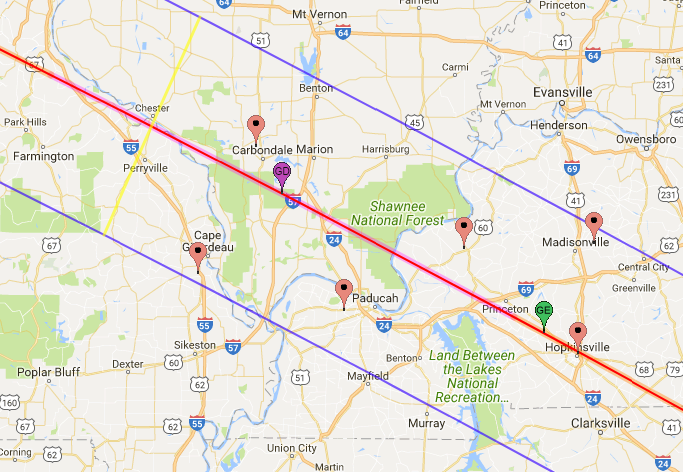 |
| Locations of Temperature Traces and Path of Totality |
 |
Media use of NWS Web News Stories is encouraged! Please acknowledge the NWS as the source of any news information accessed from this site. |
 |